"Cities with Innovation" Research Unit
Okinawa Institute of Science and Technology (Onna-son Village)
Scroll Down
The Nikken Group's “Cities with Innovation” Research Unit (a.k.a “Innove ken”) has been trying to figure out the recipes (elements) and their relationships of the space where innovation occurs (or is likely to occur) from the standpoint of experts in architecture and urban development.
TAG
Case Analysis, using recipes of the Successful Innovation Space
(We aplogogize that the article below is provided only in Japanese for now.)
https://note.com/nikken/n/nc2cb97262e00
About OIST
Although it is a relatively new graduate school established in 2009, it was ranked 9th in the world in the "normalized ranking" of the world's research institution rankings, normalized by the size of the research institution, published by Nature Index in 2019, and is the highest ranked Japanese research institution in the same ranking, earning it a high reputation internationally.
What distinguishes OIST from ordinary universities is that it is developed as part of the measures to boost the economy of Okinawa and is funded by the Cabinet Office. Mr. Koji Omi, Minister of State for Special Missions (Okinawa and Northern Territories Affairs, Science and Technology Policy) in the Cabinet Office in 2001, promoted the development of Okinawa based on the idea of realizing the development of Okinawa through the promotion of science and technology.
With the aim of becoming a global institution, Dr. Sydney Brenner, a recipient of the Nobel Prize in Physiology or Medicine, was appointed the first president of OIST. Dr. Brenner is also known as a practitioner of innovation through cross-disciplinary research. The fact that OIST is located in Okinawa is also deeply connected to the mission and operation of OIST.
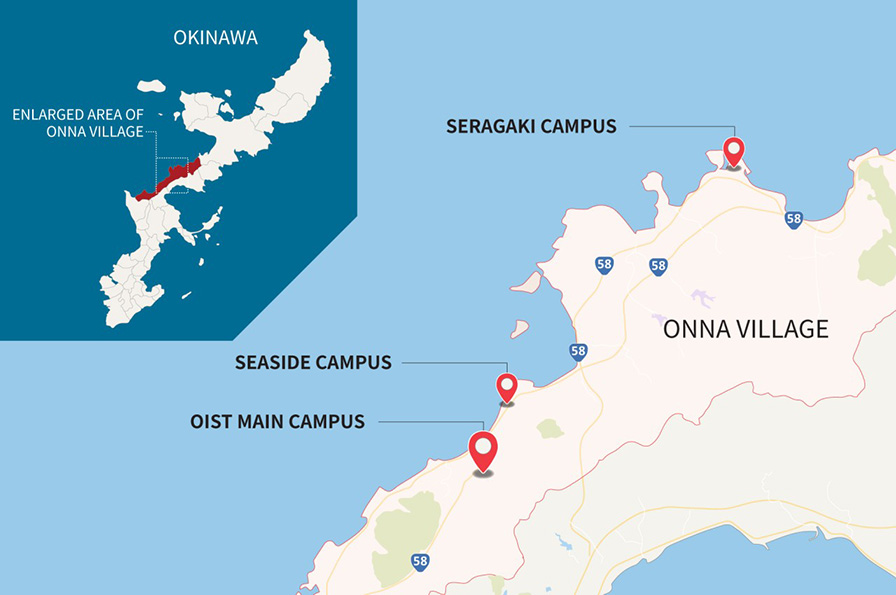 Figure 1 Location of OIST
Figure 1 Location of OIST
According to the "Okinawa University of Science and Technology Strategic Plan 2020-2030," there is also a plan to develop a facility called the "OIST Innovation Park" in the northern part of the campus where joint research can be conducted with companies. By linking research to commercialization, rather than pure research, it is intended to create new businesses and expand jobs in Okinawa. The current plan focuses more on creating “testbeds” of new research and technologies with multiple partners from academia, government, industry and investors to develop the solutions to societal problems facing Okinawa and the world, rather than constructing an actual industrial park.
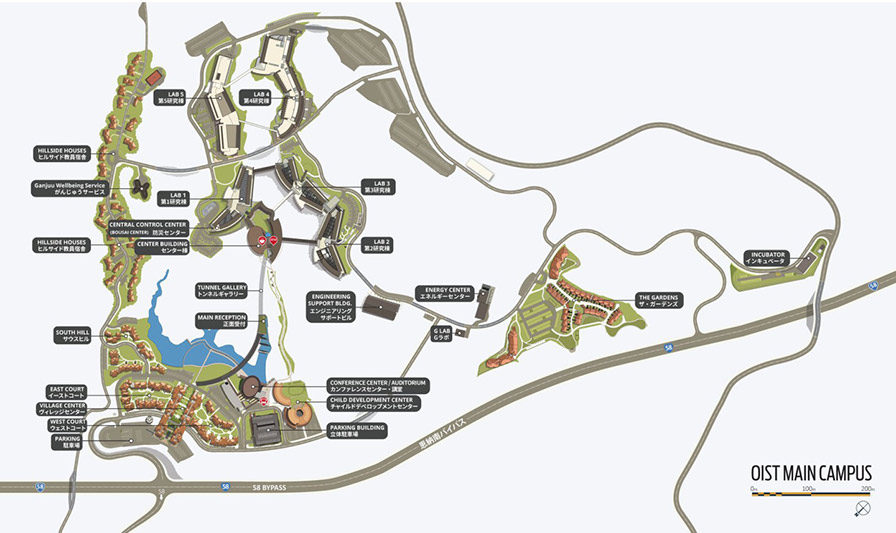 Figure 2 Map of OIST Main Campus
Figure 2 Map of OIST Main Campus
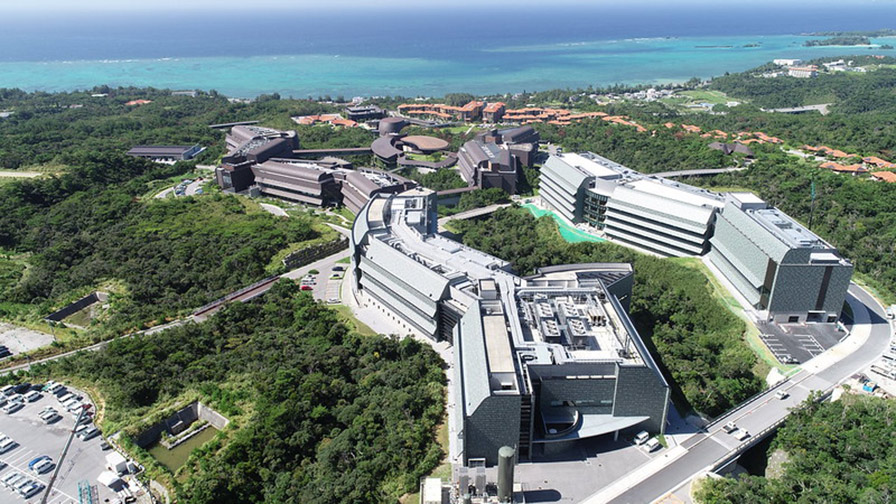 Photo 1 Aerial view of OIST campus
Photo 1 Aerial view of OIST campus
Points to focus on OIST
In addition, OIST is characterized by the fact that the concepts and efforts to generate innovation are clearly reflected in the spatial planning, and as an architectural office, we are very interested in this point.
Along with publicly available documents provided by OIST, this research and analysis are prepared based on the on-site survey in November 2020 and interviews with the vice president of OIST facilities (at that point) and people who were involved in innovation strategy and strategic planning of the university as well as the follow-up e-mail communication in December 2023.
Recipe for OIST's innovation space
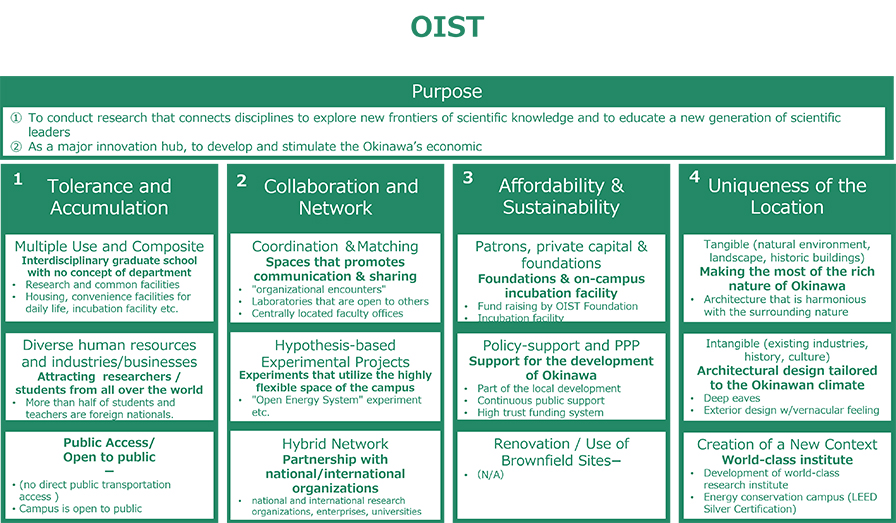 Figure 3 Recipe for Innovation Space: OIST
Figure 3 Recipe for Innovation Space: OIST
Purpose
The first one is to determine the nature of the research institute itself, and it is to develop researchers who will lead the next generation by conducting research that will pioneer scientific knowledge.
The second is to promote the self-reliant development of Okinawa as a hub for innovation in Okinawa.
As mentioned earlier, the creation of OIST and the promotion of Okinawan economy are inextricably related, and they are clearly positioned in OIST’s mission.
So to speak, OIST is not a place to conduct research for research, but rather a place to conduct research which is being carried out with the consideration that it will lead to business that contributes to regional economic development.
Element 1 Tolerance and Accumulation
Multiple Uses and Composite
Near the entrance of the campus, there is a community facility, consisting of retail stores, offices, childcare center, meeting rooms, etc.
In addition to laboratories, there are also halls with facilities that allow simultaneous interpretation and lounge spaces where small gatherings can take place.
The cafeteria area, which serves as a place for interaction on campus, is a space where you can see the nature of Okinawa in the background, and there are also places where you can talk with various people while eating outdoors.
In 2019, OIST Innovation Incubator was established to overcome the handicap that OIST is in the village of Okinawa, which is isolated from urban areas, and to aim to commercialize the research seeds which are developed in university, by working with outside researchers and business personnel.
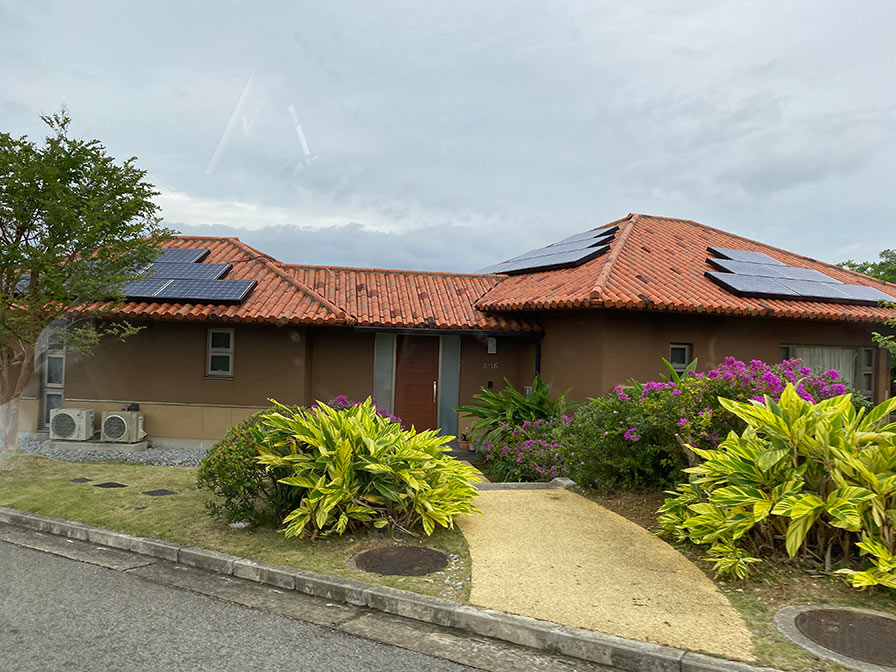 Photo 2 Faculty housing on campus
Photo 2 Faculty housing on campus
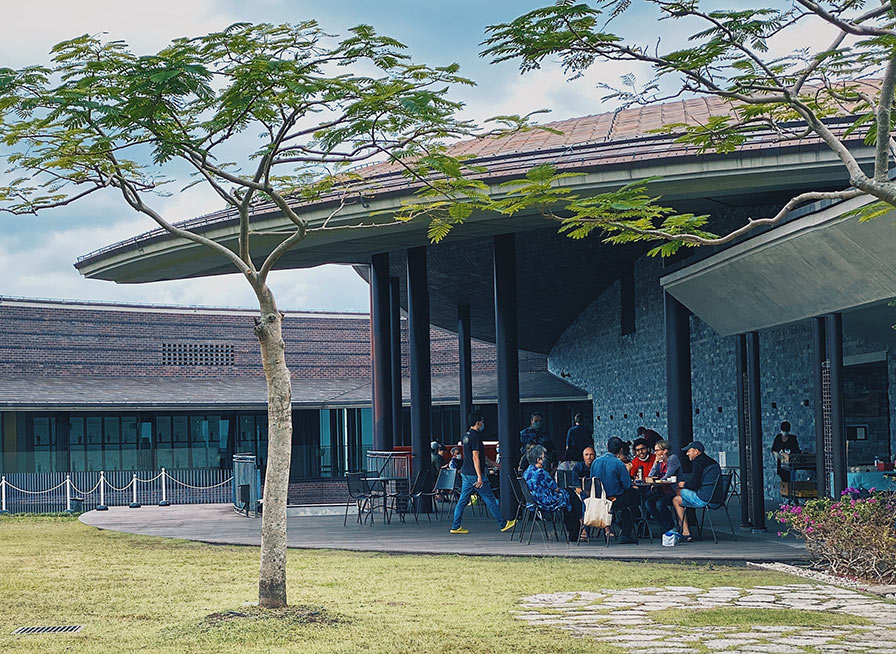 Photo 3 Cafeteria with lots of open space
Photo 3 Cafeteria with lots of open space
Diversity in people and industries/businesses
More than half of the students and faculty come from countries other than Japan. As of September 2023, faculty and staff members come from 64 countries and doctoral students come from 53 countries. In this way, OIST is a place where internationally minded people with expertise in a variety of scientific and technological fields gather.
In addition to the research institutes where only university students and faculty members are located on campus, OIST also plans to develop R&D Park in the masterplan to attract private companies to the campus. Incubation facility for startups was already built and is running. Since the campus is located on an island of Okinawa, it is not as easy for people to visit like other innovation hubs in the urban areas, but the OIST has also planned to attract companies and startups in this way.
In response to the handicap that public transportation is not easy, OIST is taking advantage of its innovativeness of international research institute and is actively pursuing a strategy to invite them to the campus by offering them physical place to do business and research with OIST.
Public access
The main access to the campus is by automobiles. According to OIST website, it will take one and a half to two hours by highway bus, taxi from Naha International Airport, and walk from the nearest bus station.
Public access has two meanings: one is public transport access, as described above, and the other is if it is open to the public. In the latter, OIST campus itself is open to the public and cafes and restaurants can be used by the public.
OIST also holds "Science Festa" to let the public know about OIST's activities, and "Science School for Children" in cooperation with Onna-son Village. It provides the public with a chance to learn about some of OIST's research activities and to experience the field of research.
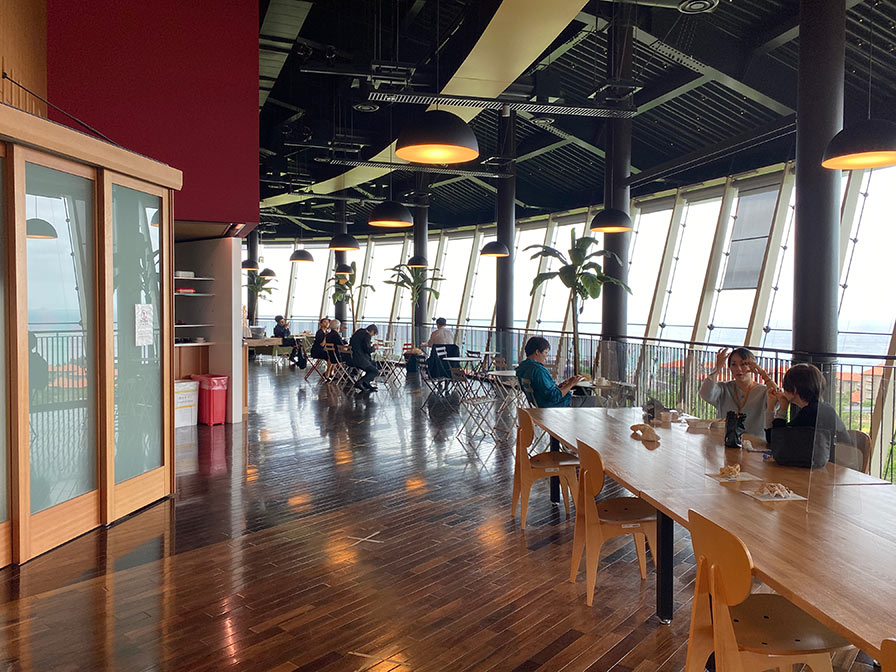 Photo 4 Ocean-visible cafeteria, open to the public
Photo 4 Ocean-visible cafeteria, open to the public
Element 2 Collaboration and Network Coordination and Matching
OIST does not have academic departments and conducts interdisciplinary organizational operations. According to our interview to Ms. Lauren Bic Ha, Assistant Vice President of Technology Development and Innovation Center, Dr. Brenner, the first deputy chairman of OIST, felt the necessity of interdisciplinary studies due to the harmful effects that scientific fields had been in silos in the 1990s, and was trying to reproduce the environment where there is no boundary between each field.
In 1995, Dr. Brenner opened the Molecular Sciences Institute (MSI) in Berkeley, California, where UC Berkeley is located, which has been regarded as a prototype of the OIST, by using a generous donation from Philip Morris. Unlike OIST, the institute was developed by renovation of existing facility, but he introduced an open laboratory concept that had no administrative boundaries and did not allow researchers to be grouped together.
For Dr. Brenner, MSI is the place for demonstration of his concept, and OIST has planned and designed the campus by reflecting this open laboratory idea. In terms of organizational management, there are three deans (chiefs) who cover faculty, students, and researchers, rather than having deans in each specialized field, such as chemistry or physics, and they see the whole thing in one go. Each research building has a laboratory for physics, biology, chemistry, computer science, mathematics, and engineering.
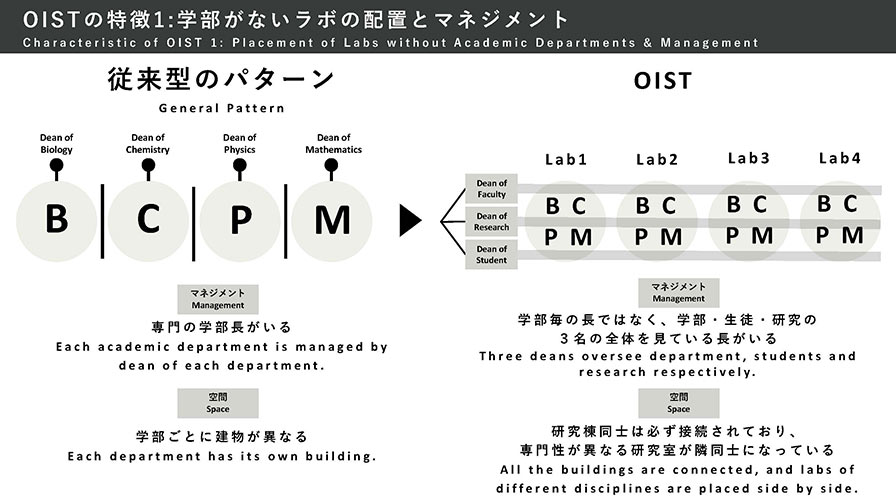 Figure 4 Placement of Labs without Academic Departments & Management
Figure 4 Placement of Labs without Academic Departments & Management
This concept is also found in the architectural plan of the campus. In a normal graduate school, the building is divided by department. In OIST, however, the laboratory buildings are connected by bridges and underground tunnels, and the layout of the laboratories within the buildings is designed so that laboratories with different expertise are adjacent to each other to spatially encourage interdisciplinary research.
In terms of the research infrastructure, OIST centralizes the procurement and management of high- tech equipment, which is a unique feature of OIST. By doing so, the university has created the situation where all the students and researchers have access to the best equipment rather than hoarded by each lab.
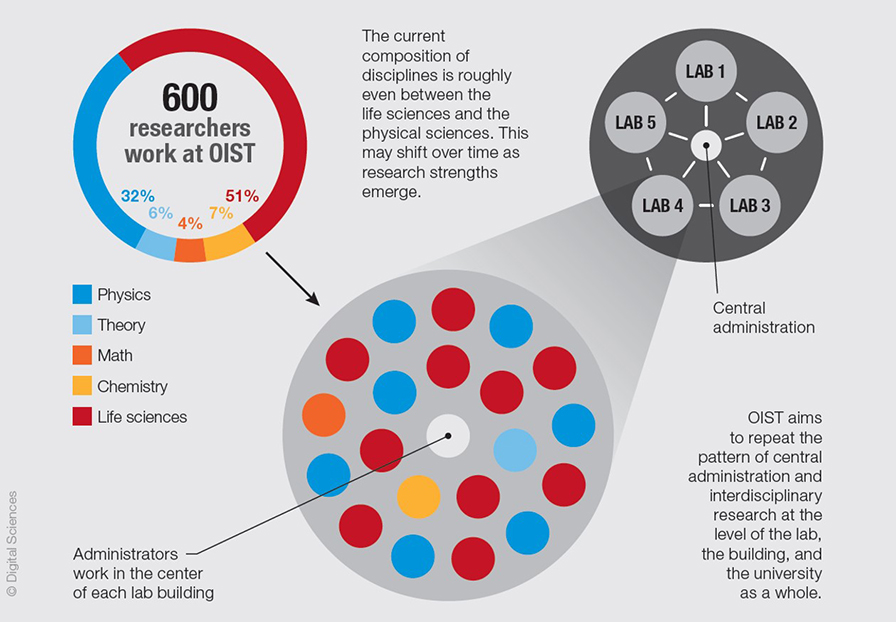 Figure 5 Lab Structure
Figure 5 Lab Structure
Source OIST, “Summary of the OIST Strategy Plan 2020-2030”
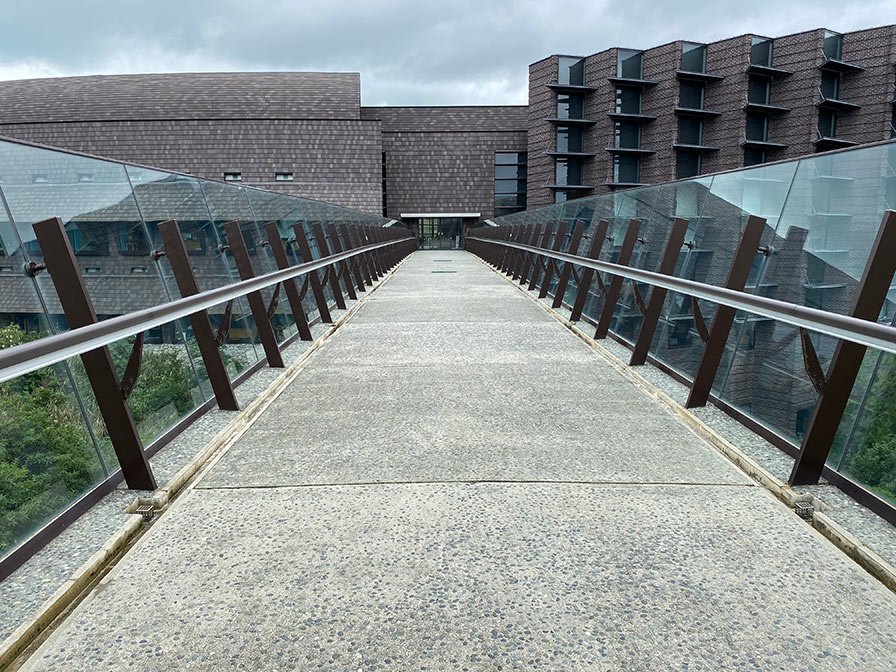 Photo 5 Bridge that connects each lab building.
Photo 5 Bridge that connects each lab building.
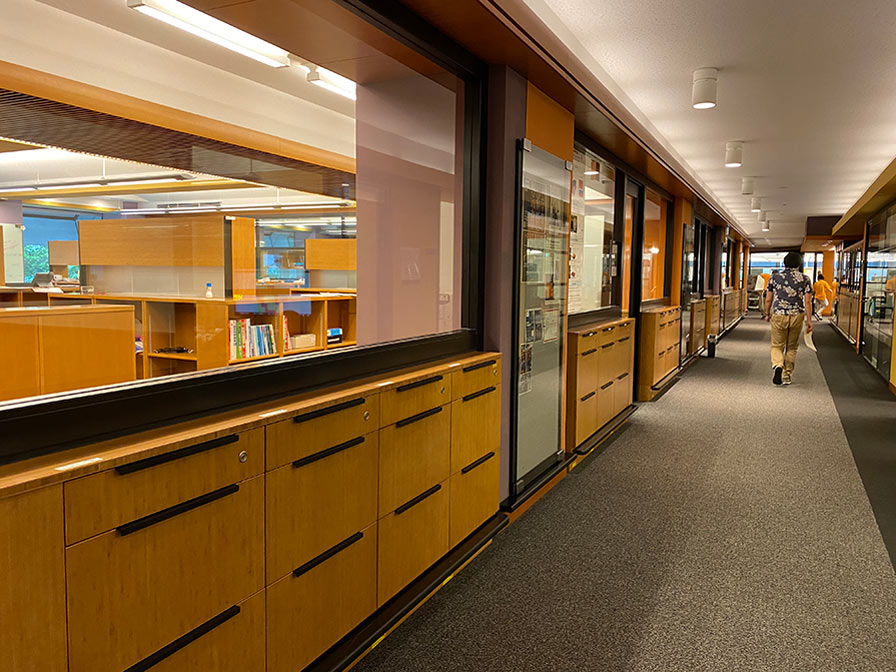 Photo 6 Laboratories whose upper walls are made of glass and transparency is secured.
Photo 6 Laboratories whose upper walls are made of glass and transparency is secured.
 Photo 7 Display of research result of the lab
Photo 7 Display of research result of the lab
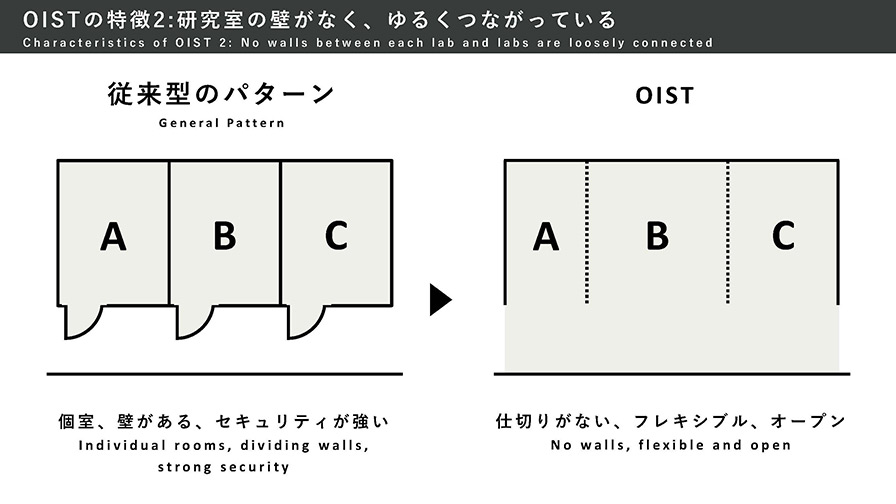 Figure 6 Difference between general scientific labs and OIST labs
Figure 6 Difference between general scientific labs and OIST labs
This is also based on the experiences in MSI, and the OIST has intentionally created a situation in which researchers in different fields run into each other within the building. According to Ms. Ha, it was difficult to bring researchers from different fields together even in MSI when it was tried out at first. Therefore, it was important to start by creating everyday conversations such as "What are you doing?" in a shared kitchen. This little interaction was very important to create the collaborative research environment.
Another characteristic of OIST lounge space is that it does not seem very cold or dry, but rather very welcoming. The colors of the walls are warm such as yellow and orange, the art works decorate the areas, which brings warmth to the space. This may make it easier for users to relax.
In addition, they have located the administration office and laboratories close together to reduce the barriers between them to help them communicate more easily. Also, the rooms of faculty members are not placed in the laboratories, and they are concentrated in a certain area, so that the faculty can interact with each other.
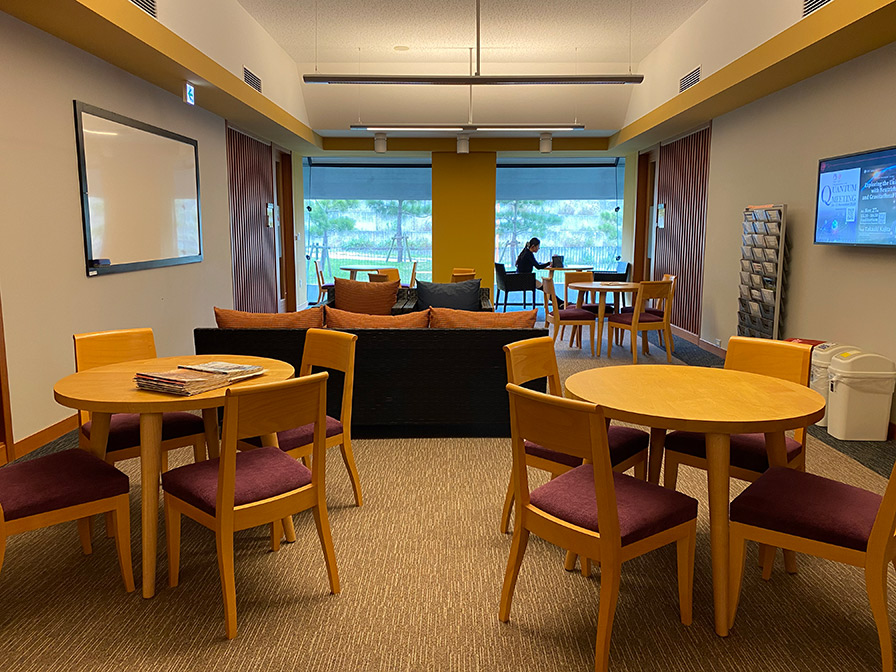 Photo 8 Lounge space in the lab building (1)
Photo 8 Lounge space in the lab building (1)
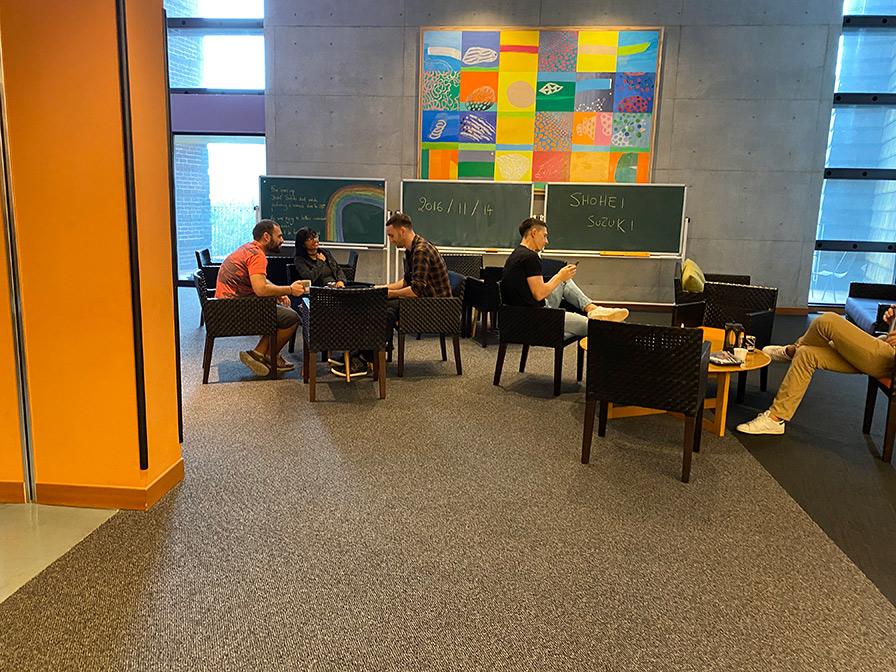 Photo 9 Lounge space in the lab building (2)
Photo 9 Lounge space in the lab building (2)
Hypothesis-based Experimental Projects
By taking advantage of the facts that the campus is privately owned, and they can decide whatever they do mostly with the university's discretion, OIST along with the Sony Computer Science Laboratory and the "Open Energy System" carried out the small project to test the idea of the local production and local consumption of electricity generated on campus.
They installed solar panels on the roofs of houses on the campus, installed power supply and demand management systems in each house, and built a network in which consumers themselves supply energy as producers, managed the supply and demand of electricity in each house, and created a system in which the supply and demand conditions of electricity were managed in each house, and the excess supply of the electricity was transferred to the areas where it was not sufficiently produced. This type of testing project in a hot, humid Okinawan climate are also suitable for testing applicability in Southeast Asian cities with similar climates.
Hybrid Network
Accordingly, OIST has concluded collaborative agreements with domestic and overseas laboratories and other universities to promote personnel exchanges.
For example, with RIKEN, researchers from RIKEN give lectures at OIST, graduate students from OIST are accepted by RIKEN to provide research guidance, and other collaboration in human resource development.
Elements 3 Affordability and Sustainability
Patrons, private capital and foundations
In addition, they have developed and operates "OIST Innovation Incubator", which is a facility for startups that utilize research seeds to create new business while collaborating with OIST, as part of the efforts to support growth of startups.
While OIST is geographically isolated, they try to create a community of entrepreneurs on the campus where they aim to commercialize the research seeds of OIST and provide an opportunity for the students to feel and experience the real-world experiences by the startups. This is a prefabricated building with a total floor area of 500m2. According to Ms. Ha, who planned this facility, she was able to incorporate three concepts that she wanted to test on-site.
The first is to create an open co-working space, the second is to provide dry engineering and wet laboratories, and the third is to create an environment in which experiments can be conducted immediately from the first day of occupation.
Although the rent for the incubation facilities is extremely low, they have selected startups that need to be located in OIST and can contribute to the economic development of Okinawa.
According to the newest information as of December 2023, Innovation Incubator is going to be expanded by four times in the near future.
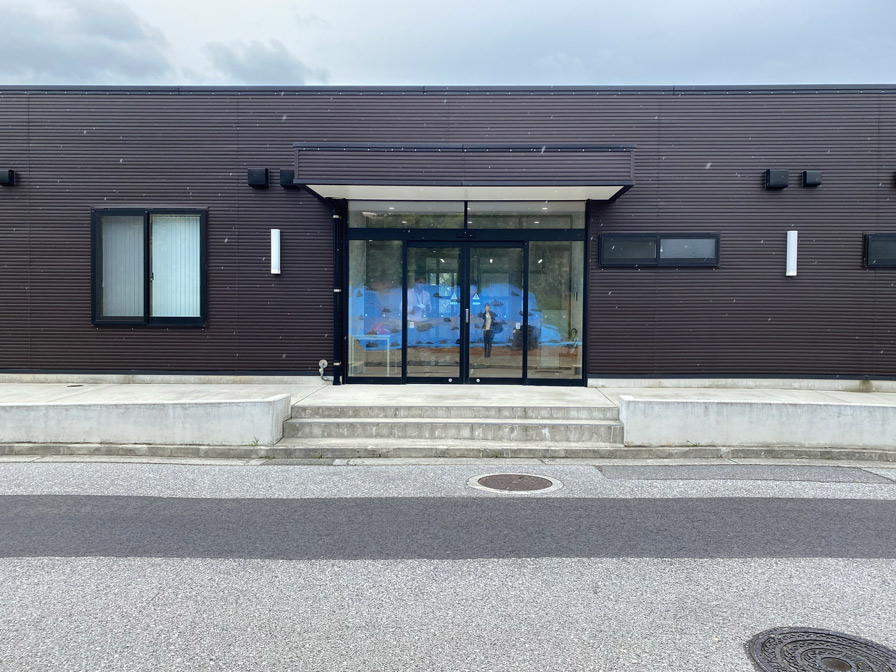 Photo 10 Incubation facility
Photo 10 Incubation facility
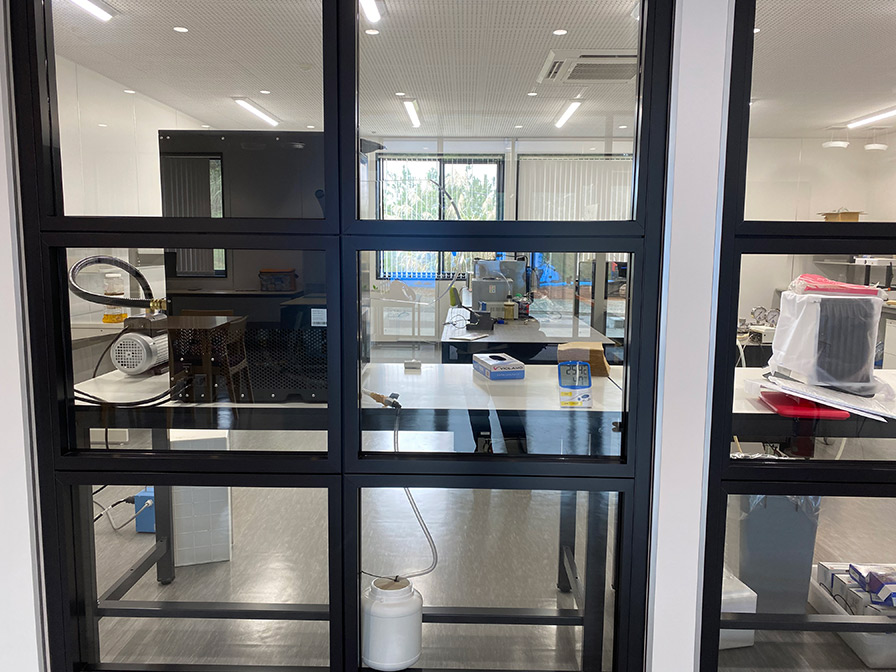 Photo 11 Transparent lab space at the Incubation Facility
Photo 11 Transparent lab space at the Incubation Facility
Policy-support and Public Private Partnership (PPP)
In particular, with regard to research expenditures, high-trust funding method is applied, which provide twice the budget for R&D of ordinary national universities.
High Trust Funding is a mechanism whereby research funding is allocated initially, and results are reported later, rather than presenting research plans to secure budget.
This makes it possible for researchers to conduct more flexible research.
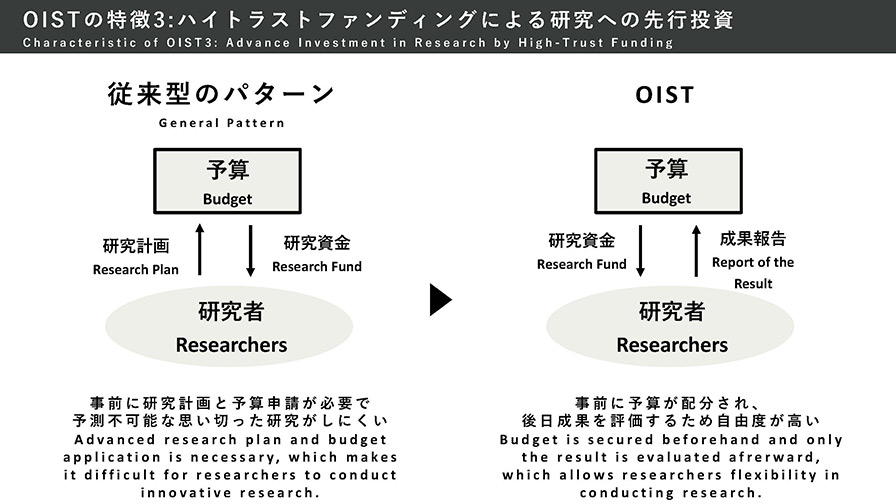 Figure 7 Characteristics of High-Trust Funding
Figure 7 Characteristics of High-Trust Funding
Renovation / Use of Brownfield Sites
Element 4 Uniqueness of the Location
Tangible (natural environment, landscape, historic buildings)
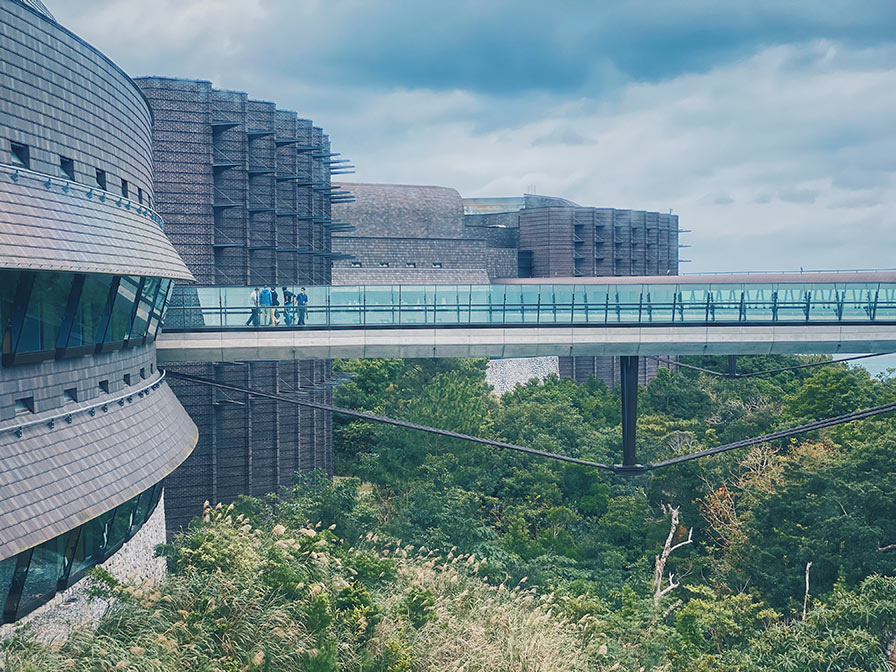 Photo 12 Skywalk that connects lab buildings.
Photo 12 Skywalk that connects lab buildings.
Intangible (existing industries, history, culture)
Creation of a New Context
In addition, they have obtained LEED Silver Certification to demonstrate their commitment to environmental conservation at international standard and have indicated a new orientation as a campus with the aim of advanced environmental protection.
Significance of OIST as an Innovation Hub
To ensure that research is not confined to the campus and does not become research for research, OIST has created an incubation facility on the campus to attract outside entrepreneurs and startups who can develop research into business and have implemented a variety of measures such as providing accelerator programs.
Furthermore, there is a plan to create R&D parks on campus to invite corporations to conduct collaborative research. In this way, there is a strong desire to commercialize research seeds and to create new industries to realize OIST's mission to boost the local economy.
It is true that OIST is being developed and operated as part of the national policy of the Okinawa Promotion Policy, and therefore, it is financially advantaged compared with other academic institutions. However, this case study of OIST proves that it is able to become a modern innovation hub wherever it is located, depending on the way in which it is done.
<Bibliography>
OIST webpage,「Agreement on Science and Academic Cooperation between OIST and RIKEN」https://www.oist.jp/ja/news-center/news/2020/3/31/agreement-science-and-academic-cooperation-between-oist-and-riken >
OIST webpage,「Ten-Year Review Evaluates OIST’s Performance and Advises on Future Growth」, https://www.oist.jp/news-center/news/2021/9/2/ten-year-review-evaluates-oists-performance-and-advises-future-growth
OIST webpage,「OIST Foundation - Supporting Innovation and Opportunities」, https://www.oist.jp/news-center/news/2019/11/22/oist-foundation-supporting-innovation-and-opportunities
Okinawa Prefecture (沖縄県)(2007), 「沖 縄 科 学 技 術 大 学 院 大 学 周 辺 整 備 基 本 計 画 」("Basic Development
Plan of Okinawa Institute of Science and Technology and Surrounding Area").
Please note that the website below is only shown in Japanese, https://www.pref.okinawa.jp/site/kikaku/kagaku/daigakuin/documents/kihonkeikaku2.pdf
Project Design (事業構想) webpage, (2018, 「再エネ100%で快適な生活 世界を変える新技術、沖縄で育む」("Comfortable life style achieved by 100% renewable energy: World changing innovative technology is tested and nurtured in Okinawa",
https://www.projectdesign.jp/201804/okinawa-innovation/004764.php
The right of the photo of the main title of this artcicle belongs to Mr. Kiyohiko Higashide. All the other photos and figures without credits were all either taken or created by the “Cities with Innovation Research Unit (Innove Ken at Nikken Sekkei) based on the site visit and interviews with the OIST representatives in November 2020. Cover image is developed based on the photo shown in OIST webpage below. We appreciate all the people at OIST who were kindly shared their experience and knowledge with us.
Members of the “Innove Ken”
Senior Consultant, Nikken Sekkei Research Institute
She specializes in historic preservation and the revitalization of parks through public-private partnerships. She like old things, but is also a fan of new things like innovation, and she is interested in how these cutting-edge innovations will be realized and presented in cities.
Takayuki ISHIKAWA
Executive Officer at Nikken Sekkei
Principal, New Business Development Group
He specializes in urban planning. Through the experiences in large-scale redevelopment projects and overseas project to develop infrastructure systems, he is interested in the "innovation" space and mechanism in which people and technologies are connected in various regions and organizations, creating new spaces and styles.
Takeshi NAKAWAKE
Former Vice President of Nikken Sekkei
He resigned after working for more than 40 years in the Nikken Group. Thirty years ago, he participated in the project to revitalizing the former sites of manufacturing plants about thirty years ago. This has led him to become interested in the theme of "innovation", and he still keeps his interest in the "evolutionary cluster structure" taught by the expertise in the field.
Yurie KIBI (Co-author)
She joined Nikken in 2017. While conducting research on co-creation and innovation, she is engaged in the support by connecting people, places, and knowledge inside and outside the company. She has published the book titled "The Purpose Model, a tool for visualizing co-creation" in 2022 based on her research.